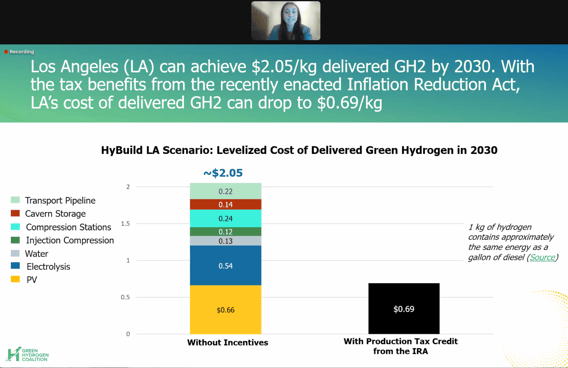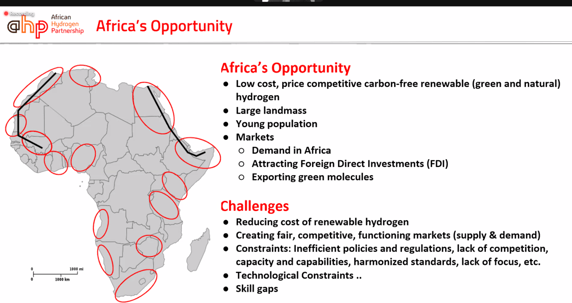“It’s also about access to energy, given 50% of Africans don’t have access to electricity at all, and industrialisation; how can we capitalise on hydrogen valleys to industrialise Africa, create jobs and opportunities?”
The Clean Hydrogen Partnership is looking for regional and national Managing Authorities from the EU-27 and Horizon Europe associated countries with which to develop cooperation in relevant key areas for hydrogen development.
The initiative is the latest in a series of collaborations between the Clean Hydrogen Partnership and authorities at different territorial levels and represents an opportunity to work together to advance hydrogen in specific regions. Around 10 Managing Authorities will be selected based on information provided in their expressions of interest.
In pursuing this initiative, the Clean Hydrogen Partnership has contracted a team composed of CIRCE, White Research and Q-Plan International.
The successful Managing Authorities will receive targeted technical support to develop synergies with the Clean Hydrogen Partnership. As a result of the support Managing Authorities can expect to strengthen cooperation with the JU in key areas regarding R&I and the exploitation of results, including: Technical Assistance, Knowledge Management and Funding and Financing, leading to the signature of Cooperation Agreements.
These agreements will reflect the assessment of the different synergy instruments at hand, together with concrete commitments in regard to the implementation of synergies, and will be structured differently per authority, allowing the implemented synergies to be tailored to each authority’s needs and context. Submissions need to be made by July 7.
News of the EoI coincided with a webinar on ‘Hydrogen Hubs and Valleys’ hosted by the Clean Hydrogen Partnership, the African Hydrogen Partnership and the Green Hydrogen Coalition, ahead of the World Hydrogen Congress in Rotterdam in October (9-13).
A Hydrogen Valley is a defined geographical area where hydrogen serves more than one end sector or application in mobility, industry and energy. They typically comprise a multi-million euro investment and cover all necessary steps in the hydrogen value chain, from production (and often even dedicated renewable electricity production) to subsequent storage and its transport & distribution to various off-takers.
Dr. Matthiys Soede, Policy Officer in the European Commission and Director of Mission Innovation, said hydrogen will be a very important building block in the energy transition. Its partnership is led by Australia, Chile, EU, US and UK and includes 21 supporting countries.
“At Mission Innovation, we want to make hydrogen affordable and accessible for all – and to make it possible we should make green hydrogen cost competitive. Our target, and it’s an aspirational goal, is to have $2 per kilogram by 2030. It’s not only producing hydrogen, you have to store and distribute it as a cost as well.”
He said it has identified 80 hydrogen valleys, and targeting another 20 by the year end, and aims to have them all operational by 2030. However the main stumbling block remains FID, with three-quarters yet to reach FID status.
Lily Backer, Marketing Manager at the Green Hydrogen Coalition, said currently the DOE is reviewing applications for the first tranche of clean hydrogen hubs funding, ahead of the successful hubs – expected to be between six and 10 – being announced in the autumn.
She said, “We do expect that these hubs will reflect diversity and potential end uses throughout the US, and a variety of different feedstocks to create renewable hydrogen, such as renewable electricity, nuclear, natural gases and CCUS.”
Turning to the IRA she added, “The way these credits work is that you actually get increasing credit with lower carbon green or clean hydrogen. So this is meant to incentivise decarbonised pathways and level the playing field for clean technologies. We’re all waiting for additional guidance on exactly how your qualify for these credits – so a lot of folks are in a ‘holding pattern’ until we get this guidance.”

Highlighting the potential of Los Angeles, which is targeting 100% renewable electricity by 2035, she said it will be “definitely possible” to produce mass skilled, low-cost green hydrogen in the west coast city, and create “tens of thousands” of jobs.
When factoring in IRA tax credits, she said its HyBuild analysis said it can reach $2.05 per kilogramme by 2030 and ultimately “under 70 cents per kilogramme delivered”. Solar capacity will be produced outside the city where there is more space.
She added, “We also found that the cheapest way to deliver green hydrogen will be by a 100% hydrogen pipeline. Demand for green hydrogen in the LA basin is significant…we identified over 5 million metric tonnes of qualified green hydrogen demand per year by 2030.”
The commercially proven method to store hydrogen in the US is via geologic salt caverns, said Backer.

Bamidele Adebisi, Professor of Intelligent Infrastructure Systems at The Manchester Metropolitan University, outlined Africa’s hydrogen potential through the work of its Hydrogen Partnership. With around 70% of current hydrogen technology now produced outside the continent, he said this is a major concern which needs to be addressed, as well as well-documented issues surrounding regulation, policies and skills gaps.
“It’s really about scaling up and balancing green hydrogen supply and demand, there’s always this push and pull. In the US and Europe you have subsidies but this is not really readily available – the interest rate is very high – so we really need to find something that works for Africa, in Africa.”
A transition slide showed how Africa’s short-term goal will be on growing its domestic markets, followed by attracting FDI in the medium term and exporting green molecules in the long term. Other slides showed developments among front-runners such as Namibia, Morocco, Egypt, Mauritania and South Africa, but many more countries need to be engaged across the continent.






